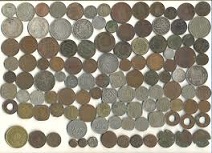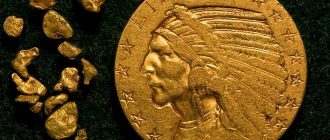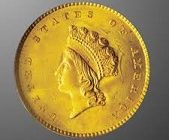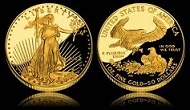Portuguese India coins have a surprisingly unique history. Read our guide for more facts & information…
Portugal set up a number of colonial footholds along the Arabian Sea and the Indian Ocean. These areas were considered collectively as Portuguese India, even though they were comprised of a number of different Portuguese possessions in the Indian Ocean, from southern Africa to Southeast Asia. Eventually the coin of this colonial realm was the Portuguese India coin.
Almost any colonial possession, regardless of its composition, eventually needs to use a common currency. Portuguese India was no exception. Headquarters for Portuguese India were established in Goa on the Indian Subcontinent. An entire monetary system was founded by Afonso d’Albuquerque at Goa on the 10th of March 1510.
The Portuguese issued coins made of gold and silver from minting facilities located in Goa. The gold coins were called cruzados or manoel and were issued in the same size, value and weight as the pagodas or hons. The pagoda was a unit of gold currency comprised of gold or half gold minted by various Indian dynasties as well as the British. The hons were how Muslims referenced essentially the same coin.
Another type of gold coin called meio-manoel, and meia-espera and espera in silver were also put into circulation. Both the gold manoel and the silver espera displayed the Cross of the Order of Christ on the obverse and the armillary sphere, the heraldic device of the King D. Manoel, on the reverse side of the coin. The gold manoel was pegged at 420 reis Portuguese.
The espera was equal in weight to an Indian coin known as the bragan or bragani, which literally translated from Hindustani means portion or share. Like most of the coins minted under the auspices of Afonso D’Albuquerque there was nothing particularly original in either their standard or in their nomenclature. The coins that were circulating among natives were essentially duplicated and given Portuguese names. The size and weight of coins then already in use were also maintained in the “newly” minted coinage.
D’Albuquerque was perhaps a more original naval general officer than coin maker. His military and administrative activities as second governor of Portuguese India established the Portuguese colonial empire in the Indian Ocean. Some have speculated that the similarities between native coins like the pagodes and pardaos d’ouro of the Hindu kings and the Portuguese Indian coins were yet another stratagem of Afonso’s meant to supersede the native currency with colonial coinage and further cement Portuguese authority in the area in general.
The Portuguese adhered to the longstanding Christian tradition that Saint Thomas the Apostle had helped to spread Christianity to India. The church declared him the patron saint of India. It was decided by Portuguese coin makers to etch the effigy of St. Thomas on their Indian coins and to call the coins St. Thome. Both the gold and the silver coins displayed a seated or standing figure of the saint with the letters S and T on one side of the coin and the crowned arm of Portugal with the initials of the reigning monarch on the other.
Portuguese politics, religion and culture became a permanent part of Southern India and this was reflected in Portuguese India Coins from that time onward.





